By Sarah Kautz, Preservation Director, Preservation Long Island. Published September 14, 2017
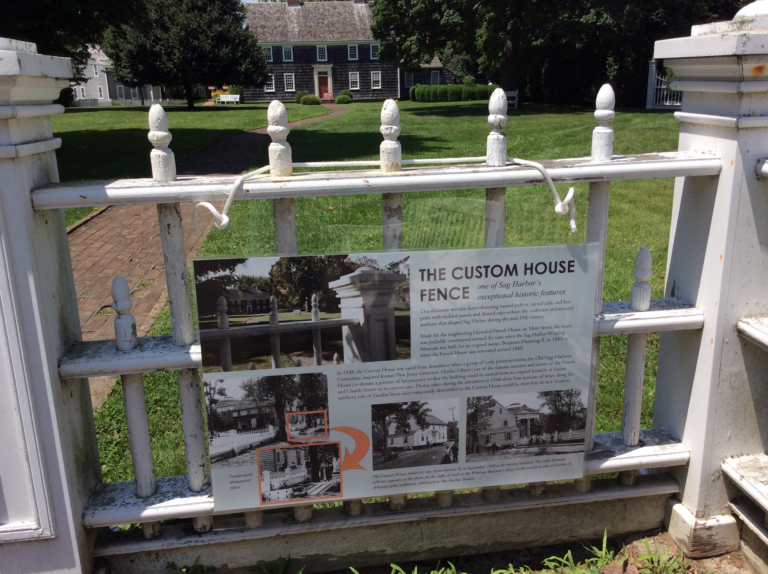
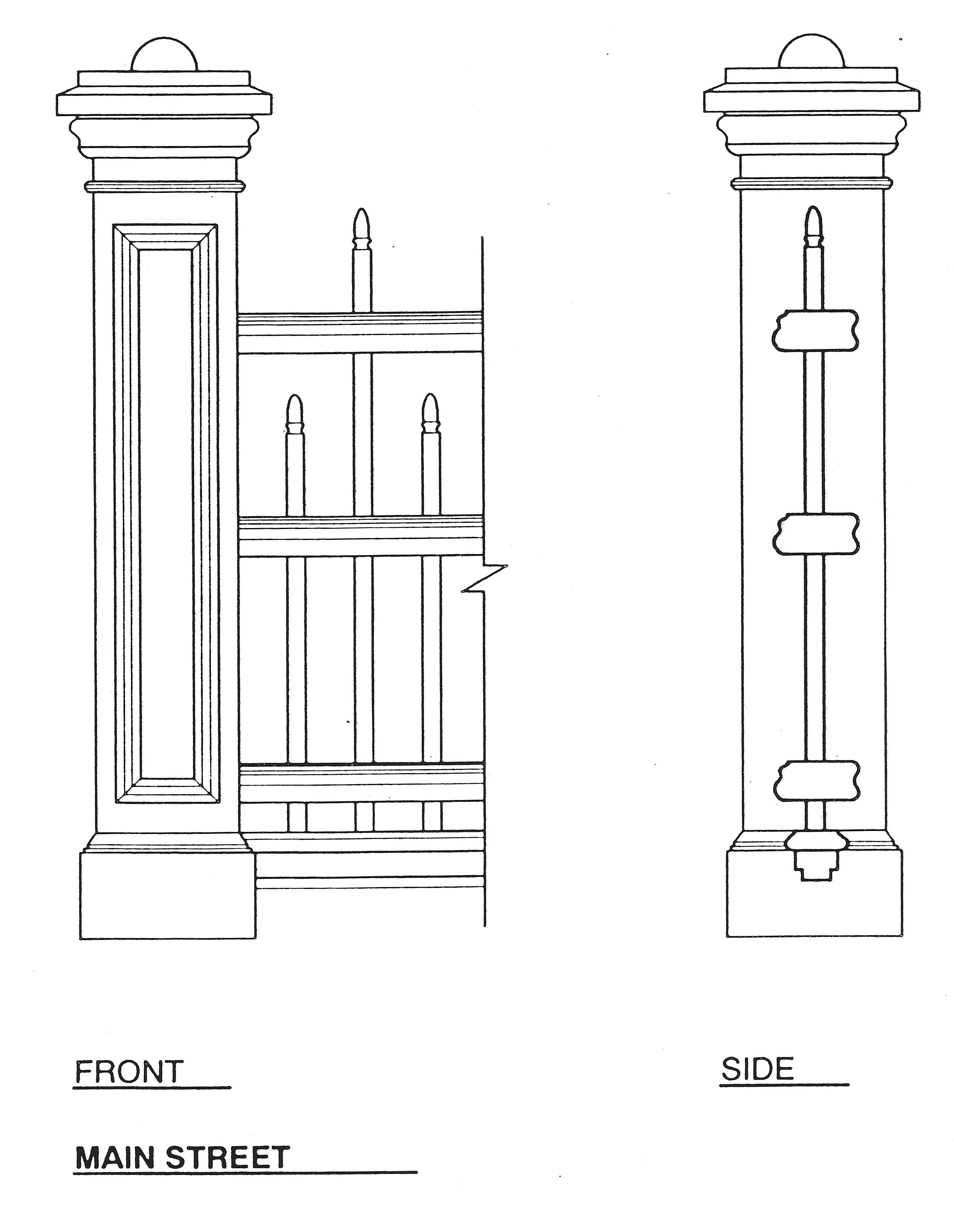
Preservation Long Island recently unveiled a new poster about the history and design of the Custom House fence in Sag Harbor! We invite you to visit the Custom House to learn more about one of the most elaborately crafted 19th-century fences on Long Island!
In the meantime, read on to explore the evolution of fence styles on Long Island since the colonial period…
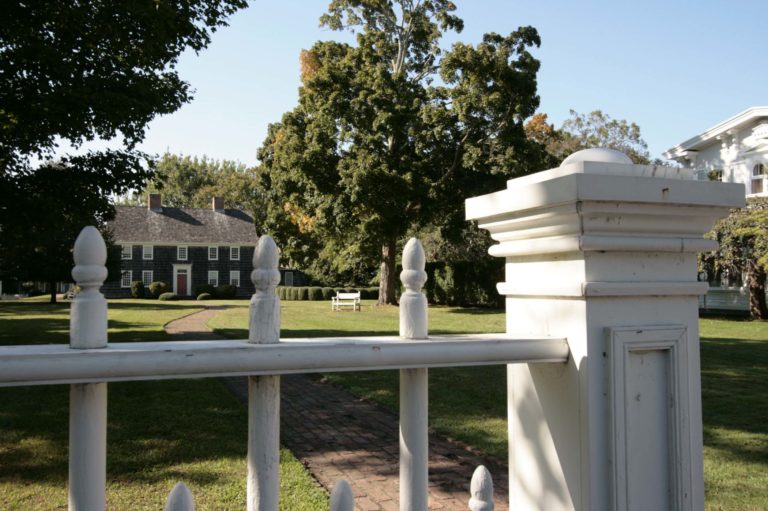
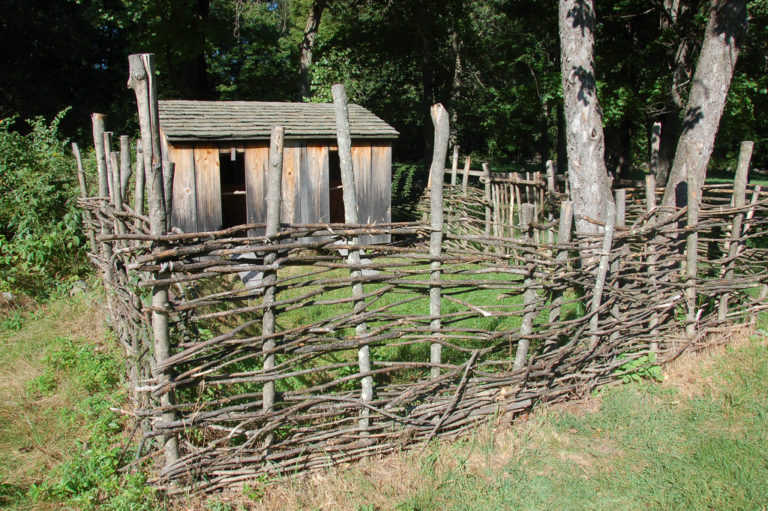
From finely crafted wrought iron to iconic wooden pickets, fence design tells a fascinating story about how Long Island’s landscape changed through time.
During the 17th century, newly arrived European colonists set about clearing land for agriculture as efficiently as possible. Colonists quickly enclosed their new fields with utilitarian stacks of brush or wattle fences made of branches woven around posts, which were common in Europe.
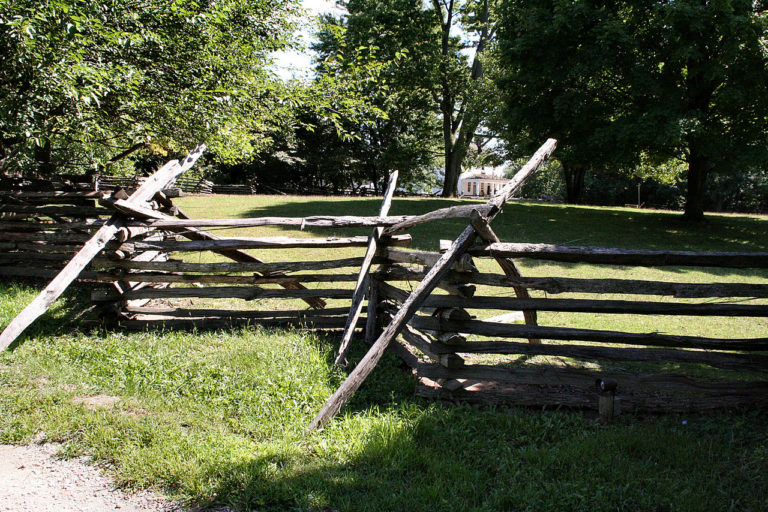
Worm fences became popular in colonial America. One of the earliest known records of a worm fence appears in a colonial document from East Hampton dated 1652.
New kinds of fencing also emerged in the American colonies. One of the earliest known records of a worm fence (aka split rail, snake, or zig-zag fence) appears in a colonial document from East Hampton dated 1652! Effective and fairly easy to build, worm fences soon became a familiar feature of pastoral American landscapes.
During the 18th and 19th century, fencing came to be regarded as an extension of a building’s architecture. Georgian, Federal and Greek Revival style houses were complemented by fences with carefully crafted posts, rails, or decorative finials. Fences with pointed arches or tracery were popular for Gothic Revival houses, while simpler pickets were preferred for Italianate and Queen Anne houses. Fence design continued to diversify as architectural styles like Colonial Revival and Modernism flourished in the late 19th and 20th century.
The vibrant history of American fence design reveals how fencing is an integral part of buildings, neighborhoods and landscapes, so it is not surprising that many municipalities have rules pertaining to the form, size and location of fences. Moreover, fences associated with designated historic properties or within historic districts may also be protected by local landmark laws. If you are considering a fence project, check with your town, village, or city to see if your community has any regulations or guidelines about fences. Such information can prove vital. For instance, the potential disturbance of graves at Old Southampton Burying Ground caused by a neighboring homeowner’s inappropriate fence project could have been easily avoided by more careful planning.
Explore an overview of design standards for property owners and residents in the Historic District of Cape May, NJ, including detailed guidelines for fences!
Preservation Tips
How to care for your historic fence:
- Regular maintenance is vital for fences made of wood or metal.
- Look for signs of deterioration like flaking paint, cracks or split joints, and remedy as needed to prevent damage from moisture intrusion and other issues.
- Application of appropriate paint, stain or preservative treatments can help protect wood or metal fences from deterioration.
- If repairs include replacing damaged sections of an historic fence, new sections should match the original fence materials as closely as possible.



